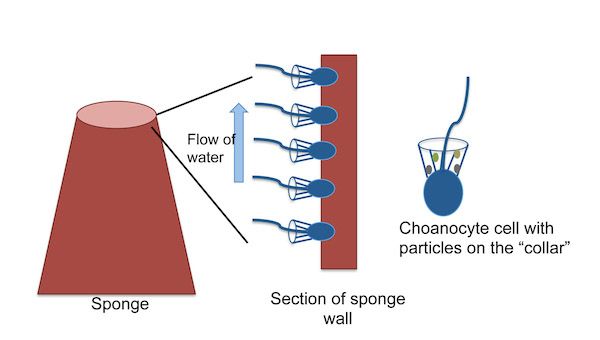|
|
Post by DrBlueThumb on Apr 24, 2016 7:00:51 GMT
Sponges have an incredible ability to pump large amounts of water through their bodies – some sponges can pump up to 50,000 times their own volume in a day. That would be like an average sized person drinking 900,000 gallons of water in a day! Sponges do this in order to obtain food. They feed on particles and dissolved nutrients in the water. Because sponges filter such large volumes of water, this can have a big influence on water quality in shallow coastal areas. But how do sponges, relatively simple organisms, pump that much water through their bodies? The answer is they use millions of small flagellated cells called choanocytes. These choanocytes have a collar around them and are also called collared cells. When the flagella beat, water movement is generated and the collar traps small particles for food. The cell digests the particles or the particles can be transferred to other cells in the sponge's body. experiment.com/u/tiDWCA |
|

